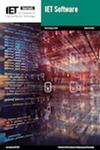Beam Transmission (BTR) Software for Efficient Neutral Beam Injector Design and Tokamak Operation
IF 1.3
4区 计算机科学
Q3 COMPUTER SCIENCE, SOFTWARE ENGINEERING
引用次数: 0
Abstract
BTR code (originally—“Beam Transmission and Re-ionization”, 1995) is used for Neutral Beam Injection (NBI) design; it is also applied to the injector system of ITER. In 2008, the BTR model was extended to include the beam interaction with plasmas and direct beam losses in tokamak. For many years, BTR has been widely used for various NBI designs for efficient heating and current drive in nuclear fusion devices for plasma scenario control and diagnostics. BTR analysis is especially important for ‘beam-driven’ fusion devices, such as fusion neutron source (FNS) tokamaks, since their operation depends on a high NBI input in non-inductive current drive and fusion yield. BTR calculates detailed power deposition maps and particle losses with an account of ionized beam fractions and background electromagnetic fields; these results are used for the overall NBI performance analysis. BTR code is open for public usage; it is fully interactive and supplied with an intuitive graphical user interface (GUI). The input configuration is flexibly adapted to any specific NBI geometry. High running speed and full control over the running options allow the user to perform multiple parametric runs on the fly. The paper describes the detailed physics of BTR, numerical methods, graphical user interface, and examples of BTR application. The code is still in evolution; basic support is available to all BTR users.用于高效中性束注入器设计和托卡马克操作的束传输(BTR)软件
BTR代码(原-“光束传输和再电离”,1995年)用于中性束注入(NBI)设计;该方法也适用于ITER的注入系统。2008年,将BTR模型扩展到包括托卡马克中等离子体与束流相互作用和直接束流损失。多年来,BTR已广泛应用于各种NBI设计,用于等离子体场景控制和诊断核聚变装置的高效加热和电流驱动。BTR分析对于“束驱动”聚变装置尤其重要,例如聚变中子源(FNS)托卡马克,因为它们的运行依赖于非感应电流驱动和聚变产率的高NBI输入。BTR计算详细的功率沉积图和粒子损失与电离束分数和背景电磁场的说明;这些结果用于总体NBI性能分析。BTR代码开放给公众使用;它是完全交互式的,并提供直观的图形用户界面(GUI)。输入配置可以灵活地适应任何特定的NBI几何形状。高运行速度和运行选项的完全控制允许用户在飞行中执行多个参数运行。本文详细介绍了BTR的物理特性、数值方法、图形用户界面以及BTR的应用实例。代码仍在进化中;所有BTR用户都可以获得基本支持。
本文章由计算机程序翻译,如有差异,请以英文原文为准。
求助全文
约1分钟内获得全文
求助全文
来源期刊

IET Software
工程技术-计算机:软件工程
CiteScore
4.20
自引率
0.00%
发文量
27
审稿时长
9 months
期刊介绍:
IET Software publishes papers on all aspects of the software lifecycle, including design, development, implementation and maintenance. The focus of the journal is on the methods used to develop and maintain software, and their practical application.
Authors are especially encouraged to submit papers on the following topics, although papers on all aspects of software engineering are welcome:
Software and systems requirements engineering
Formal methods, design methods, practice and experience
Software architecture, aspect and object orientation, reuse and re-engineering
Testing, verification and validation techniques
Software dependability and measurement
Human systems engineering and human-computer interaction
Knowledge engineering; expert and knowledge-based systems, intelligent agents
Information systems engineering
Application of software engineering in industry and commerce
Software engineering technology transfer
Management of software development
Theoretical aspects of software development
Machine learning
Big data and big code
Cloud computing
Current Special Issue. Call for papers:
Knowledge Discovery for Software Development - https://digital-library.theiet.org/files/IET_SEN_CFP_KDSD.pdf
Big Data Analytics for Sustainable Software Development - https://digital-library.theiet.org/files/IET_SEN_CFP_BDASSD.pdf
 求助内容:
求助内容: 应助结果提醒方式:
应助结果提醒方式:


